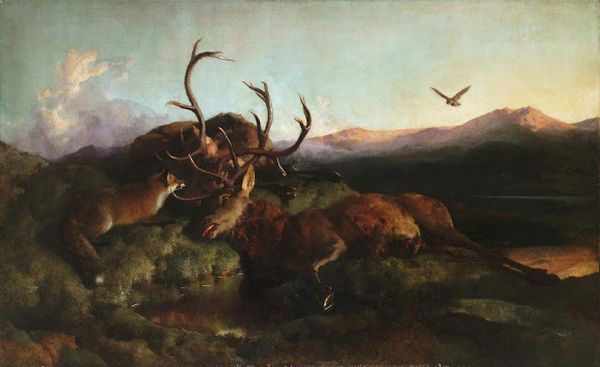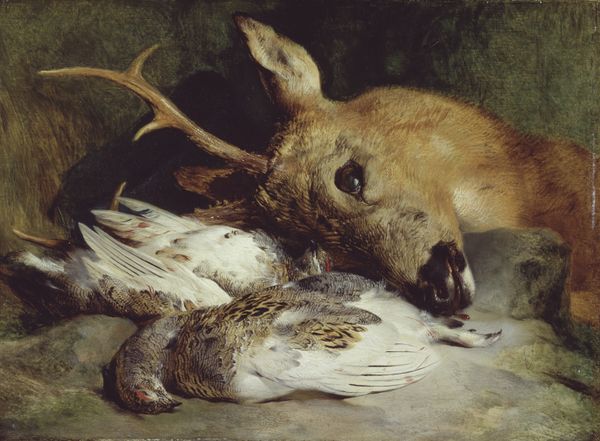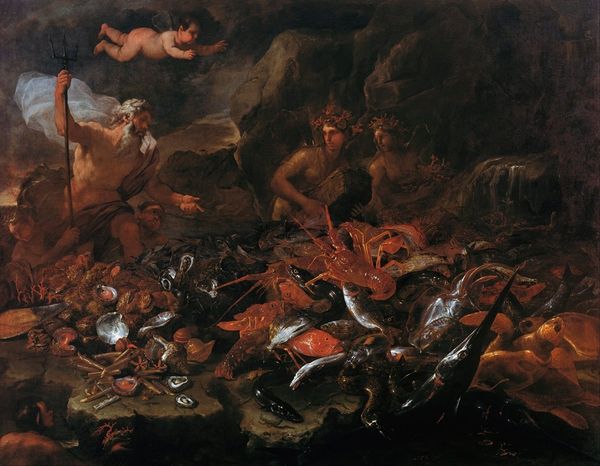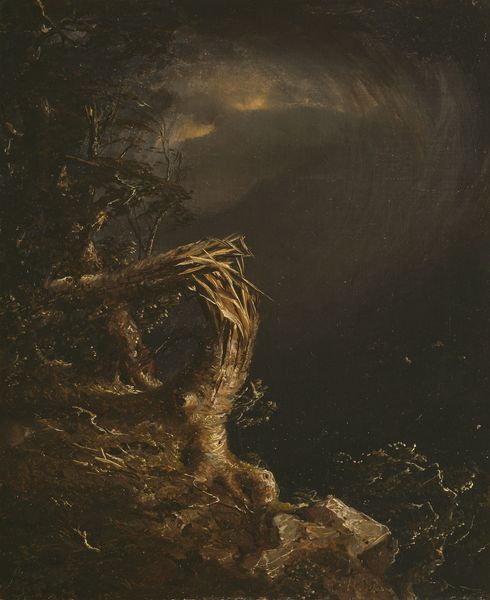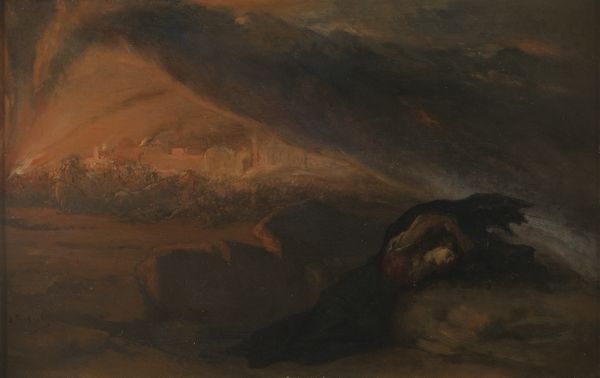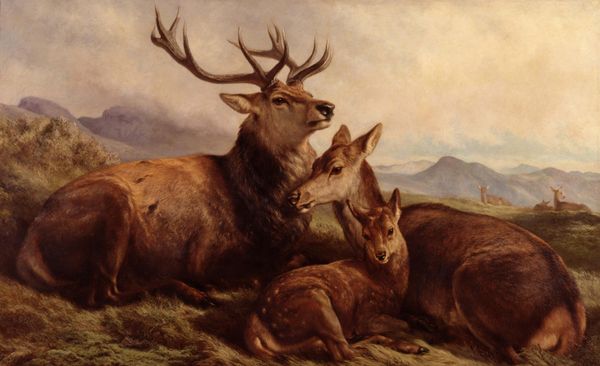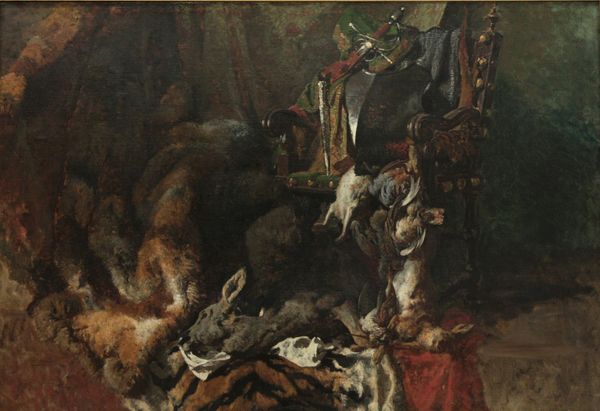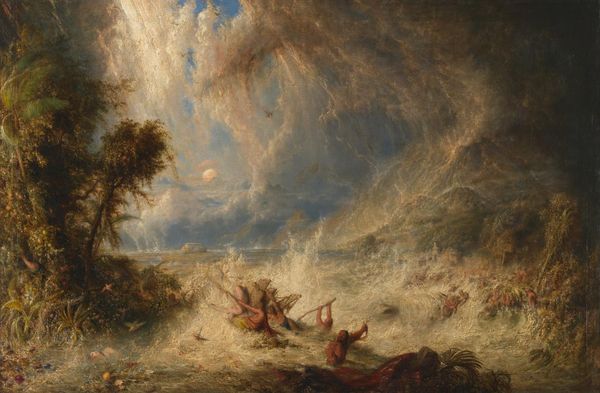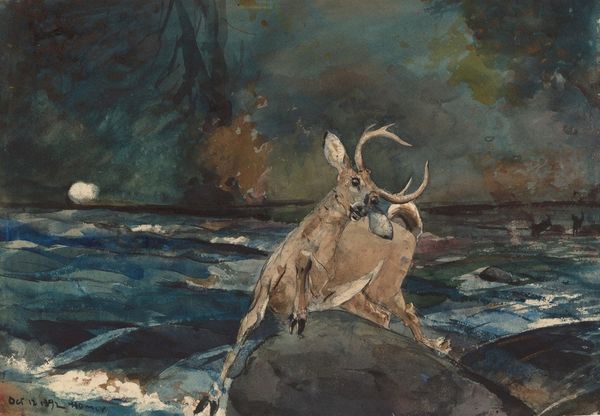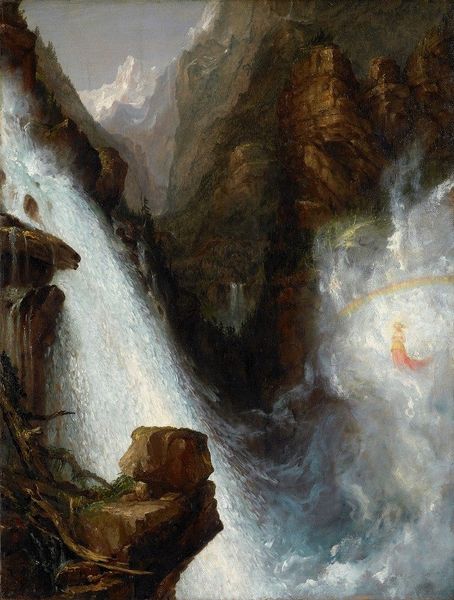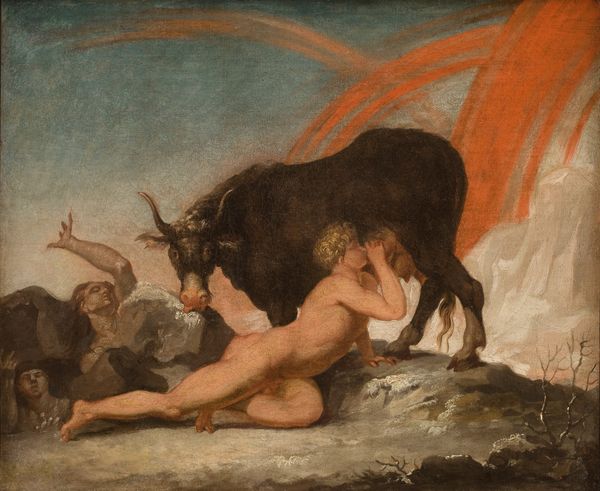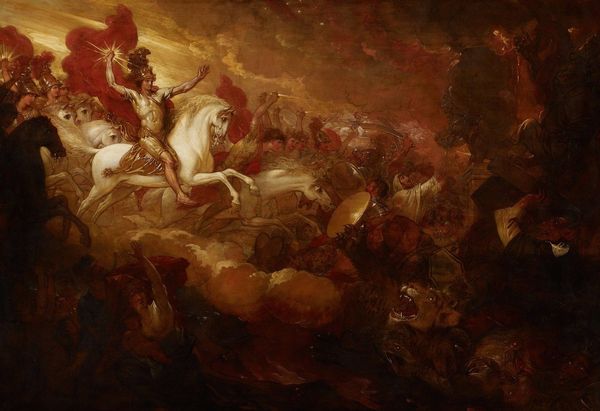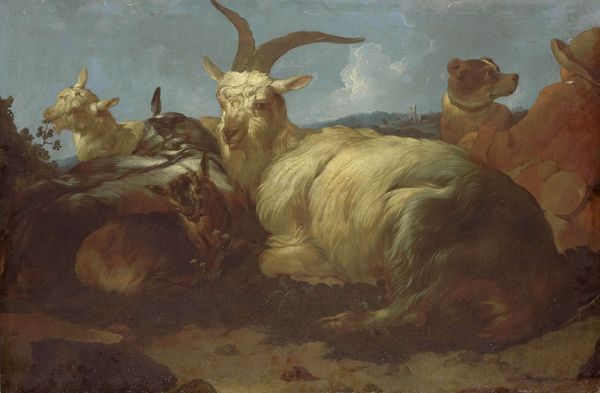
painting, oil-paint
#
narrative-art
#
animal
#
painting
#
oil-paint
#
landscape
#
oil painting
#
romanticism
#
history-painting
#
academic-art
#
realism
Dimensions: 159.4 x 908 cm
Copyright: Public domain
Curator: Edwin Landseer’s canvas from 1832, entitled "Deer and Deer Hounds in a Mountain Torrent," presents a rather dramatic scene, wouldn't you agree? Editor: Utterly gripping! The sheer dynamism captured, the implied violence. One can almost feel the torrent’s force just by looking at it. Curator: Landseer, renowned for his animal paintings, has truly captured a raw, untamed struggle here. Look at how the oil paint conveys the churning water—such skillful brushwork and tonal variations. Editor: It's a vivid representation of the romanticized vision of nature—unforgiving, yet sublime. I immediately think of the Highland Clearances and the disrupted power dynamics inherent in 19th-century Britain; it reflects the human impact and romanticism around landscapes during times of forced migration and altered class relations in society. Curator: Interesting interpretation. Structurally, the composition pivots around the apex of the stag's head, directing our gaze toward the upper left, heightening that sense of precariousness and turmoil, and I think of Landseer’s earlier training and academic background. Editor: Quite. But look closer—isn't the romantic rendering of these animals, especially the stag, a loaded trope of national identity? There is tension between Landseer celebrating animals on a grand scale while reinforcing existing class and hunting hierarchies in Britain. Curator: Precisely. By humanizing these animals with such carefully constructed expressions, Landseer’s allegorical intent cannot be overlooked. Consider how he uses dramatic light and shadow, imbuing the scene with narrative. Editor: Indeed, the semiotics here are layered. A painting becomes less about animals, but about power, about the romanticising landscapes of British nobility through images of struggle—of control. The drama on display, amplified by scale and composition, speaks volumes about the period’s social imagination. Curator: The formal devices Landseer employed in this artwork underscore its narrative potency. Through light, movement, and structure, one detects more than just brute struggle. Editor: Ultimately, it prompts us to ask how our interpretations are woven within wider sociopolitical contexts of our historical narratives.
Comments
No comments
Be the first to comment and join the conversation on the ultimate creative platform.
